In my last article I described how the various elements of planning fit together in the supply chain.
On one side we had Demand Planning which then feeds Supply Planning, but what is Demand Planning and how do the various elements of
- Forecasting
- Demand Planning
- Activity Planning
- New Launch Planning
fit together? In this article this is what we will explore.
We can begin by setting out a sequence as in Fig 1
So Demand Management is comprised of a number of separate and distinct activities, each with their own purpose and each valuable to the whole process.
The aim of Demand Management is to deliver to the business the best possible estimate of demand in the short, medium and longer term. Each of these has different requirements.
In the short term we need enough detail to be able to combine with actual orders in order to decide what production and purchase actions to take. (
In the medium term there may be some purchase decisions required but mostly it's likely to be about capacity decisions and in the longer term this is the sole purpose and may involve both tactical and strategic capacity decisions.
Forecasting
Sales Forecasting is the science of taking data, usually in this case historic sales data, and using statistical algorithms to project forward an estimate of future demand. The algorithms can range from very simple to extremely sophisticated, in my personal view too much time is wasted on:-
- selecting between the different statistical algorithms
- refining the settings for each
- running simulations to see which predicted best the history.
Why do I say this? Because the fact is that all statistical forecasting algorithms assume that the conditions which created the history will continue, and will repeat any time based variability, in the same way in the future. I don't know about you but my experience in business (nearly 40 years of it now!) is that the future is highly unlikely to be the same as the past. So, whilst it's important to create a starting point using history and projecting trends and seasonality, I don't believe, personally, that investing large amounts of time and energy in trying to get that projection to be a more and more accurate match for history is very useful.
With Simpleforecasting we use a straightforward linear regression algorithm to project the overall trend from history into the future and then this can be modified to incorporate a level of repeating seasonality as decided by the user. Both the amount of variability and the degree of time precision vs smoothing can be set by 2 simple sliders. (fig 2)
Fig 2. Unmodified Linear Regression Forecast and Forecast Modified to Include Repeating Historic Variability
In my view this is where Forecasting ends and what comes next is -
Demand Planning
Demand Planning is the process of modifying the forecast on the basis of known, planned activities in the future. These may be the businesses own planned activities, external activities (e.g. The Football World Cup) or, if you have a good collaborative process with customers, known competitor activity.
The impact of these activities could be:
- An added increased volume
- A reduced volume
- A multiplication of normal volume (positive or negative)
- A shift in timing of volume
or any combination of the above.
Again using Simple Forecasting to illustrate:
In fig 3 we can see the effect of adding a fixed volume promotion which we know will add 200,000 cases across a 4 week period. However we also predict that there will then be a downturn of 20,000 cases for three weeks following the end of the promotion, yielding a net overall sales increase of 140,000 (Fig 4).
| Fig 3 - Added Volume |
Fig 4 Added Volume and Subsequent Downturn |
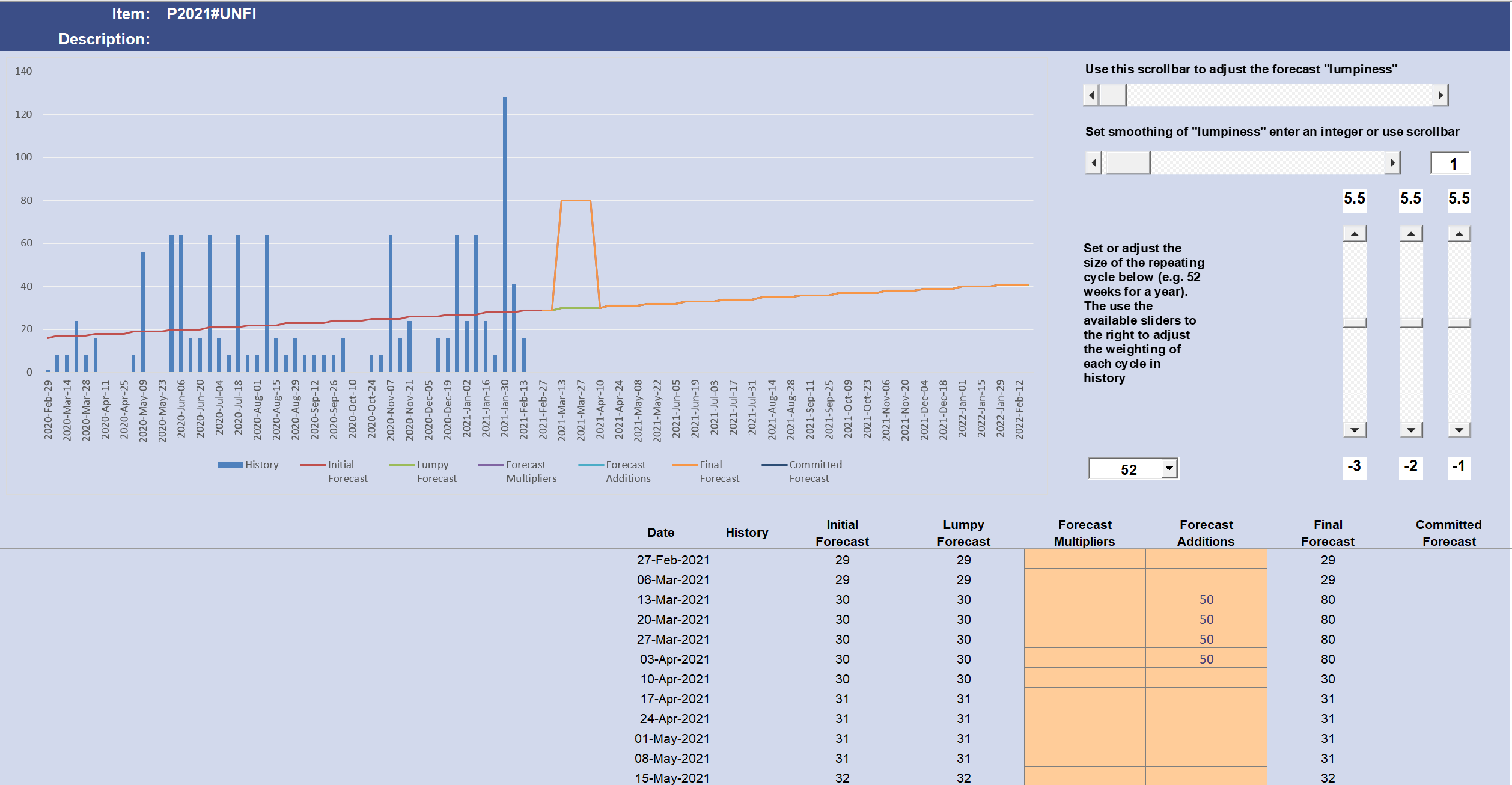 |
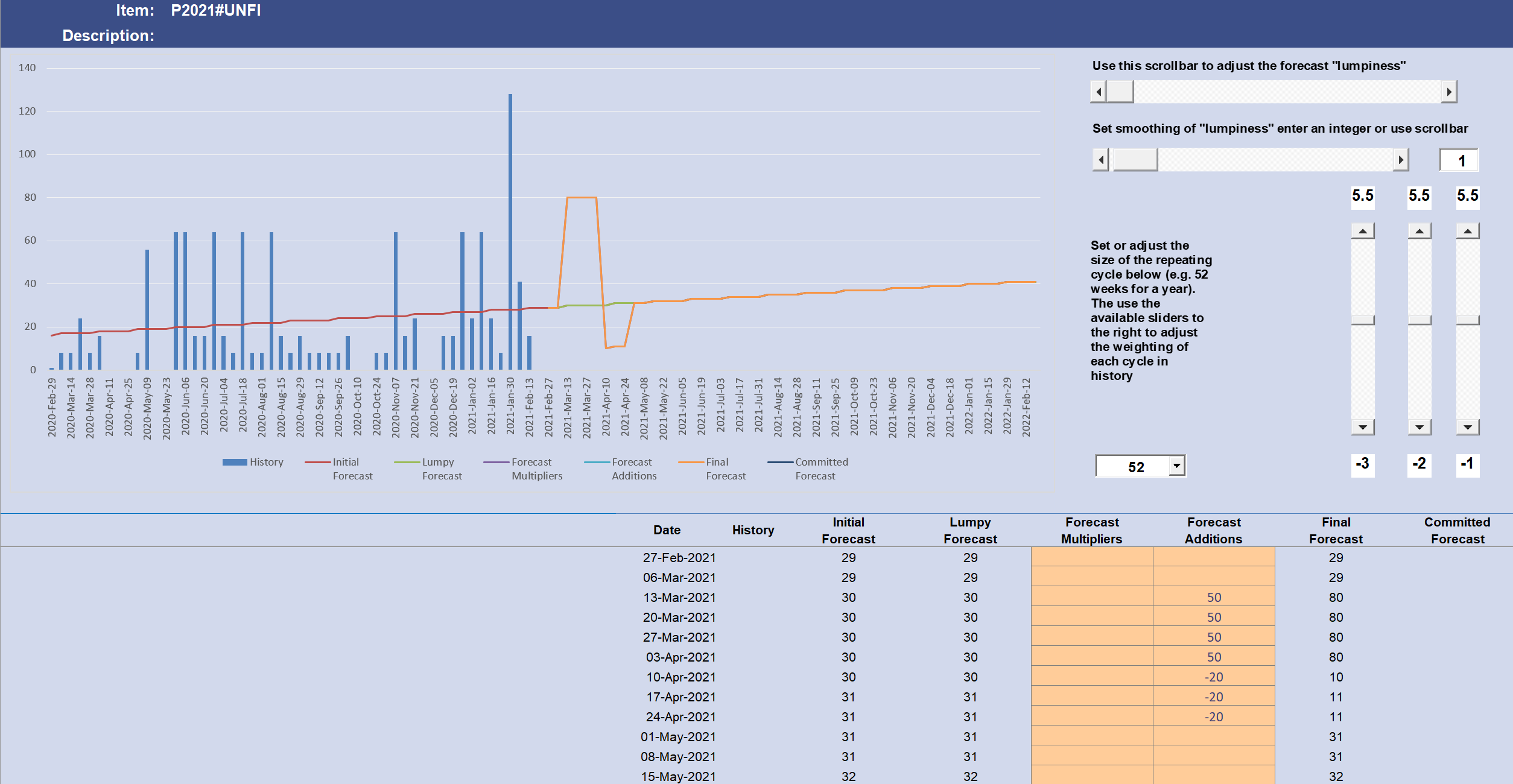 |
Finally we also know that we are going to increase distribution for this item by a factor of 2 several weeks after the promotion with the new distribution having the same anticipated throughput but ramping up over a 4 week period. This is illustrated in Fig 5.
Fig 5. Promotion and increased distribution.
So much for the system mechanics but what about the process of adding these impacts?
In most businesses these will come from Sales or Marketing and be brought together either by the planning function or by a separate Demand Planning function. I prefer the latter because we need to keep separate the predicted sales and the managing of stock to meet those sales. Where these functions are not clearly separated it is easy for a business to end up adding additional volumes or bringing forward timings both to the Demand Plan and subsequently to the Supply Plan.
It needs to be ABSOLUTELY clear that the role of the Demand Plan is to predict when product will be sold and not to try and predict when product should be made or stocked! The latter is the role of the Supply Planning function. This mistake is very common and leads to great confusion, the segregation of roles and responsibilities is crucial.
So who should have the final say on volumes and timing? Sales? Marketing? Supply Chain?
I personally recommend the following model:
- The Demand Planner is responsible for the initial forecast.
- Sales and Marketing are responsible for market activities - specifically the WHAT, WHERE, WHEN, HOW LONG FOR. This should include specifics of the activity, the range of customers and regions in which the activity will take place and of course the start time (including any likely buy in periods) and the duration.
- The Demand Planner is then responsible for the volume calculating the volume changes that will accrue from these activities, using the history of this or similar activities to assist with the estimates.
In this way the responsibilities and accountabilities are absolutely clear. Sales and Marketing to ensure the activity is carried out as defined and the Demand Planner(s) for the ultimate volumes.
Of course the Demand Planner should get buy in from Sales and Marketing for the volumes and any disagreement should be taken to the Demand Review for resolution.
One thing that, in my experience will NEVER work is for Sales to begin with a definition of the revenue and for the volumes to flow down from this. This should ALWAYS go the other way. Define the activity - then calculate the volumes - then calculate the revenue.
If the resulting revenue figure is not what is desired then the activity must be adjusted. Just changing the revenue figure is not planning - it's dreaming.
The demand plan should now be communicated throughout the business. In Simple Forecasting we have created a report which allows for rapid examination of the Demand Plan for individual items and for any combination of groups of customers, product types, customers etc.
Widespread communication is vital.
Fig 6. Demand Plan Report from Simple Forecasting.
Demand Management
So we have a plan and of course we will pass this to Supply for planning and capacity planning and ultimately for execution.
There is one last part of the process though that is so often neglected. This is the area I call Demand Management.
By this I mean tracking what is actually happening and understanding the causes for, and possible corrective actions for, any significant deviations form the Demand Plan.
These may be internally caused through supply failures or it may be that customers are not behaving in the planned way. In either case this should be flagged as part of the Track process in S&OP.
We will discuss this in more detail in later articles when we talk about S&OP and IBP and the role of planning in these essential Business Management Processes.
I see many businesses where there is no attempt to manage this aspect and I have never understood why this is. For sure you cannot call a major retailer and tell them to get their orders placed! but you can have a conversation about why things are not going to plan which will give you vital information about what is happening in the market and allow you to formulate a response.
Always remember - the greatest source of information about was will happen and what is happening is NOT the forecasting system but rather it is your customers.
And the most valuable tool at your disposal as a demand planner is not your hugely expensive system ( Simple Forecasting actually has a FREE version) it is the TELEPHONE or EMAIL. Always talk to your customers - often.
In the next few articles we will go on to discuss several aspects of Supply Planning including inventory management, capacity planning, materials planning and more.
March 2021

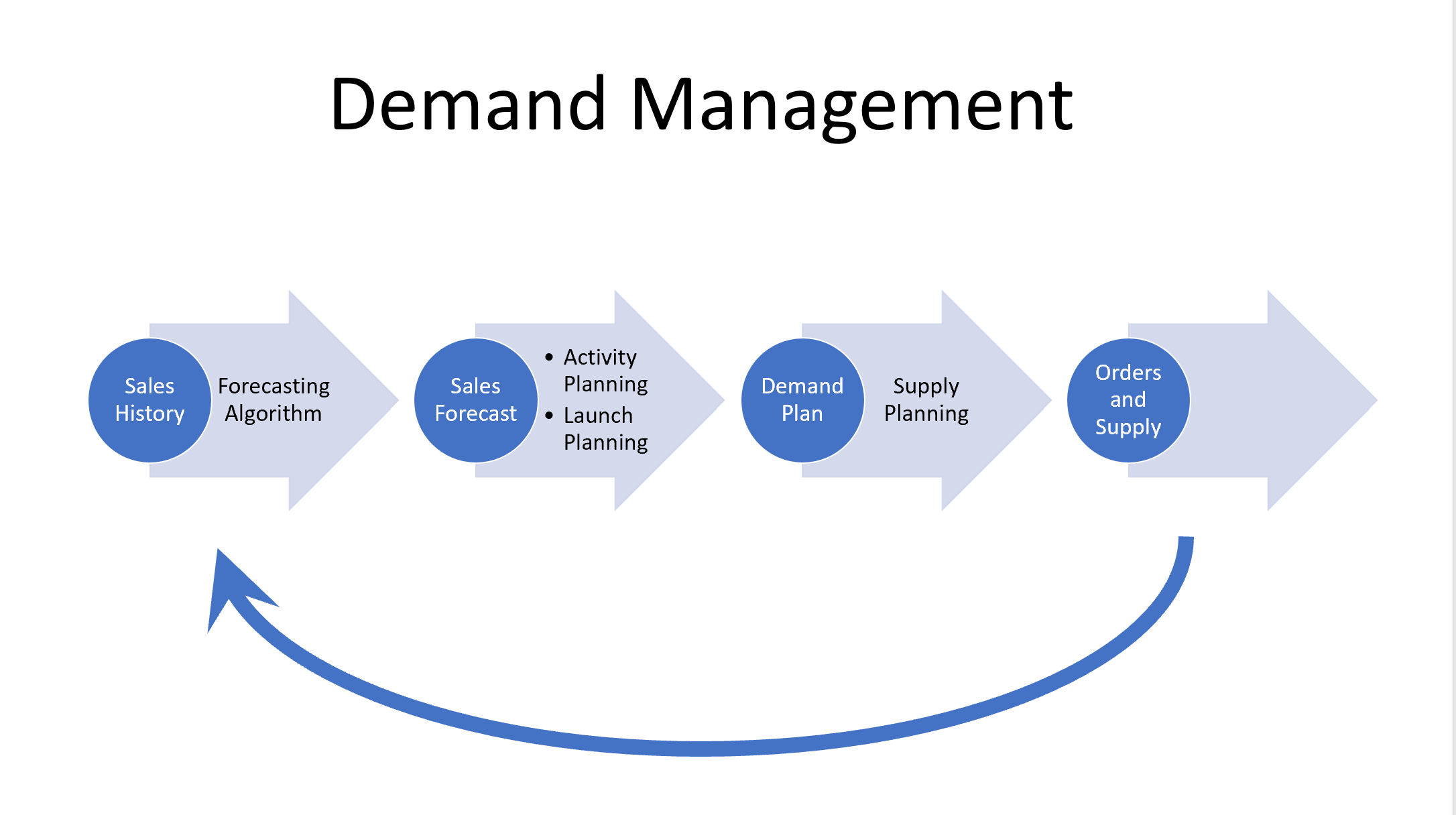
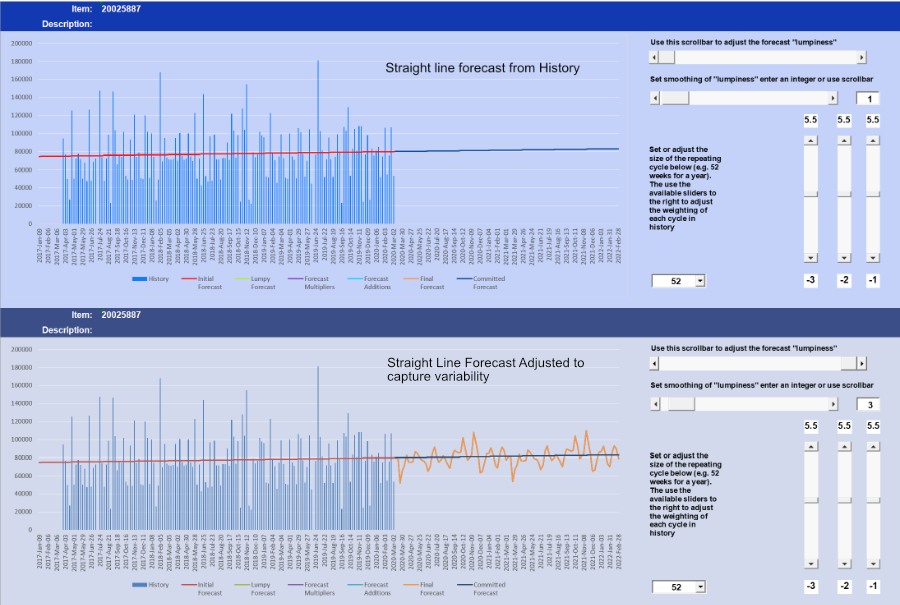
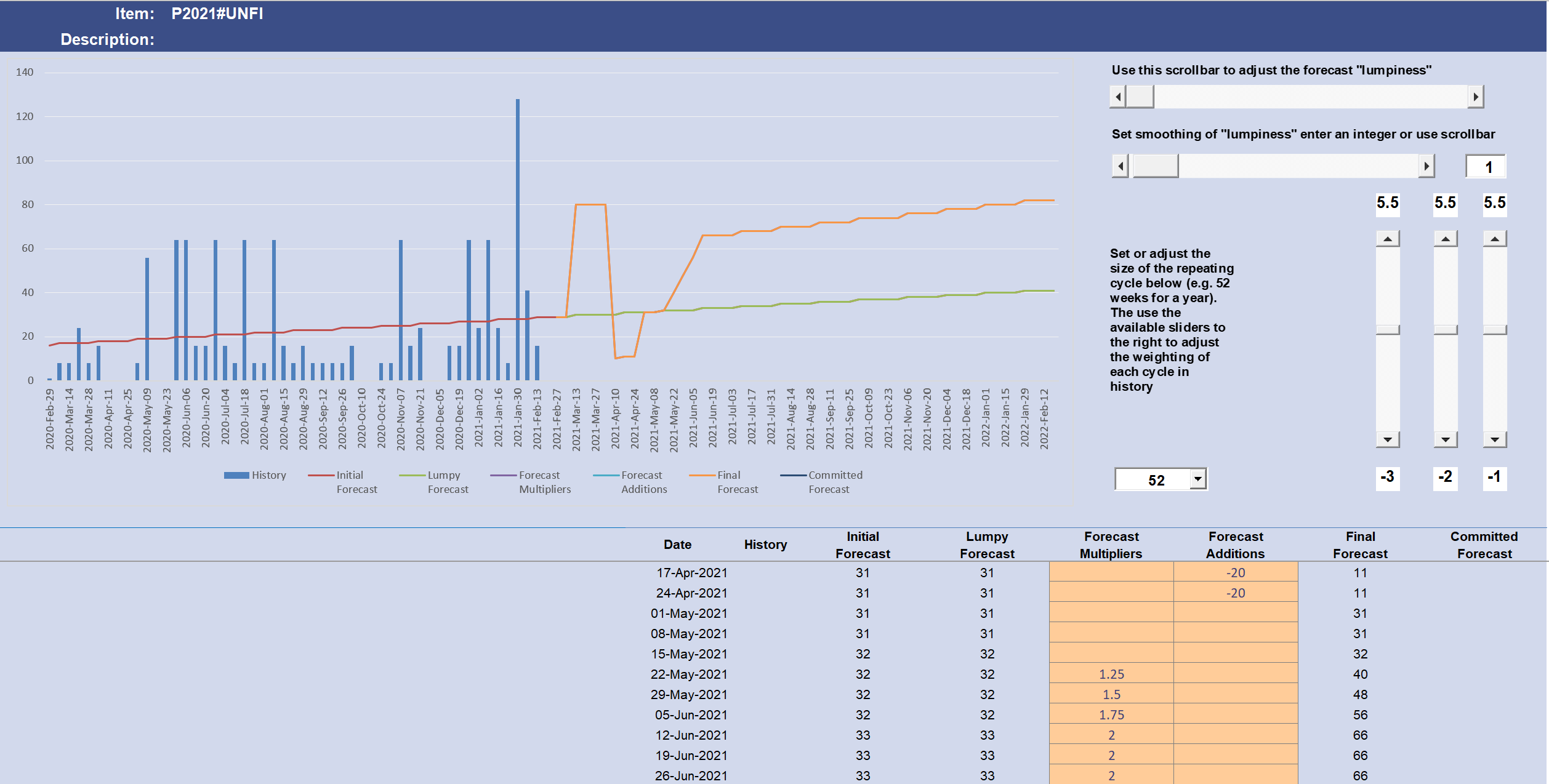
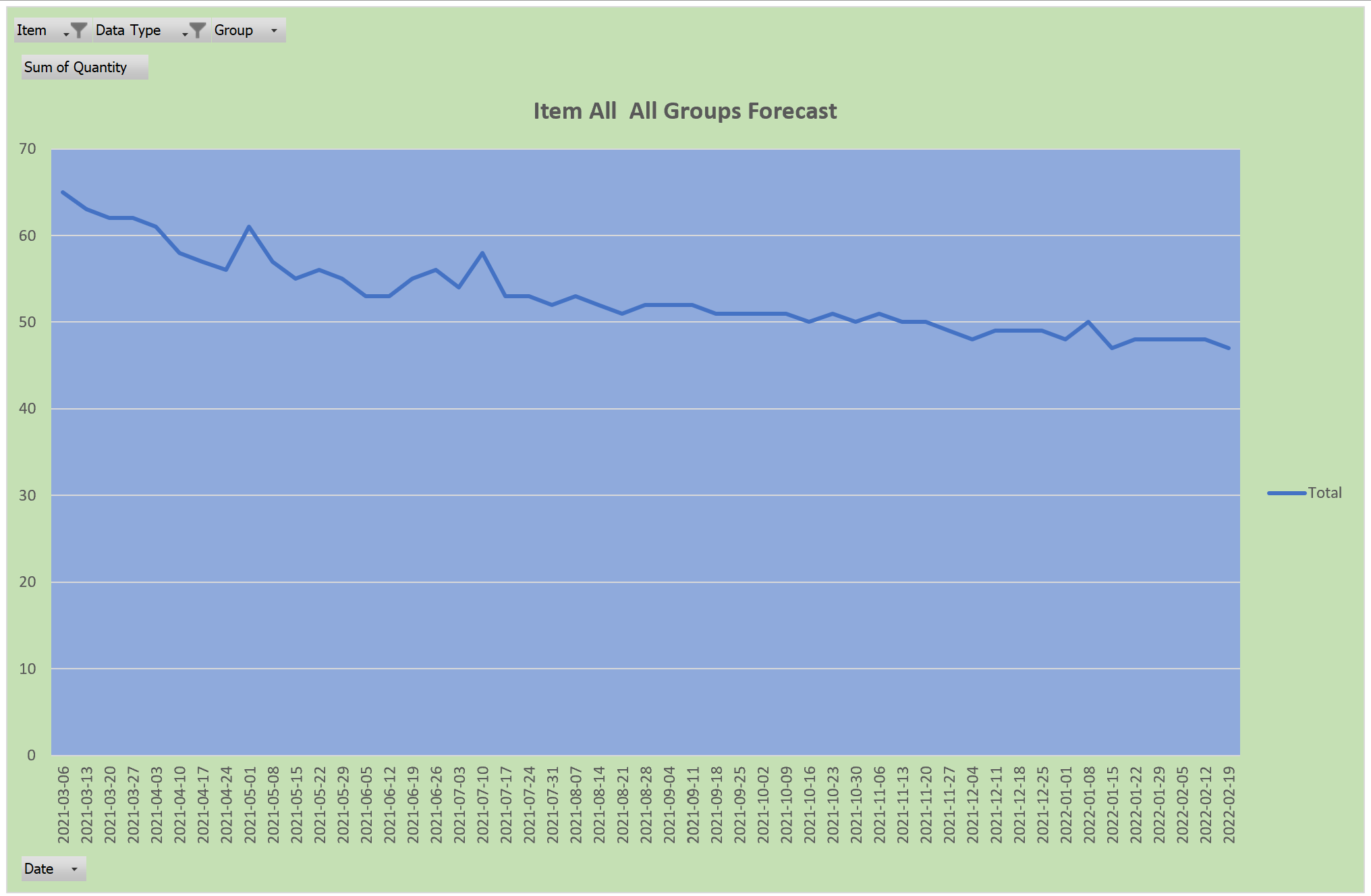
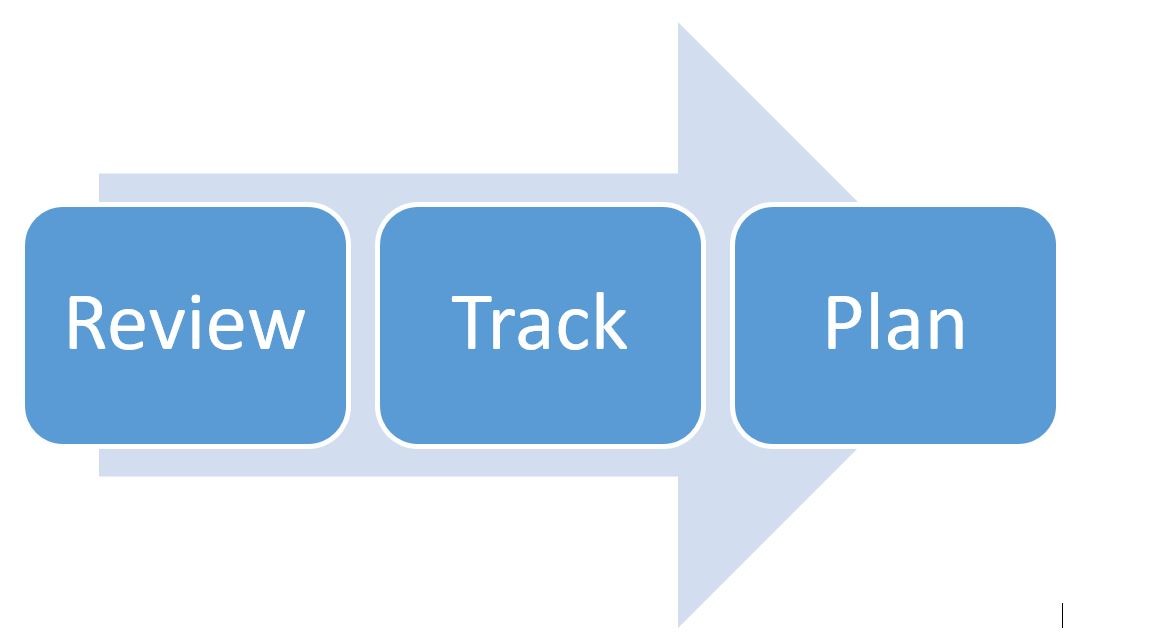


Comments powered by CComment